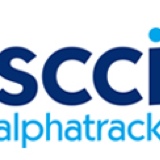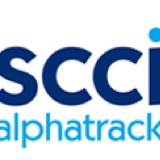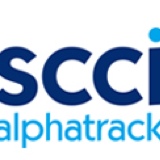Title Page
-
Conducted on
-
Block Name
-
MDU Key (Reference number)
-
This survey is to determine the condition of the cabling and carry out a network assessment across selected Virgin Media MDU installations that are over 18m high and were pre-wired prior to 2015. Where ever possible this is a non-intrusive condition survey. However, your assessment and responses are to be based on what you need to access to respond to the questions in the survey below. But, at no time should you take any risks to your personal safety or members of the public’s safety in completing the survey. You are required to inspect entry holes to premises made as part of a VM installation, this includes removing and reaffixing trunking that restricts inspection of a hole. If you see or are made aware of, damage to internal fire partitions where Telecommunication cables pass through a partition you should include this in your survey report at section 5.1. Due to the changes in the BS7671:2015 internal wiring regulations (which give requirements for the methods of support of wiring systems throughout an installation in fire escapes and fire exits), Regulation 521.11.201 (applied in 2015) requires that cables should be adequately supported against their premature collapse in the event of a fire by metal cable clips etc. More recently BS7671:2018 wiring regulation has replaced the wording 'escape routes' with 'access or egress routes' in regulation 521.10.202 (applied in Jan 2019). It is important to note that during this survey programme you will assess installations that were completed before these requirements were enacted and which were appropriate at the time the installation was completed and which continue to be acceptable if they are in good condition.
1. Surveyor Details
-
1.1 - Name
-
1.2 - Company and Employee Number
-
1.3 - Email address
-
1.4 - Contact number
-
1.5 - Have you completed your site specific risk assessment?
-
This must be completed before you commence
-
1.6 - Is this a non-intrusive survey? (No ceiling tiles to be lifted and ONLY VM containment to be inspected)
-
Asbestos Register is required before proceeding and details entered in 4.2, 8.2 and 8.2.1
2 - Address Details (Full address details required)
-
2.1 - Building name (and number where applicable)
-
2.2 - Street
-
2.3 - Town/City
-
2.4 - Post code
-
2.5 - MDU Key (Reference number)
-
2.6 - Building owner and contact details (if known)
3 - External Building details
-
3.1 - Is there external VM cabling to the building
-
3.2 - Are the external VM cables/ VM Cable trunking above or adjacent to access / egress routes adequately secured?<br>(access / egress routes include doorways, openings or windows which could be routes for evacuation or for firefighting activities)
-
3.2.1 - 3.2.1 - If "No" is there a risk posed to people? Describe the risk. (If multiple risks, list all)
-
3.2.2 - Attach photographs of failures
-
3.2.3 - 3.2.3 - Which access / egress routes are affected (indicate affected routes on building schematic - 6.4)
-
3.3 - Where external VM drop cables run along and/or above walkways and enter into properties (typically through external walls or door frames), has the hole around the cable been adequately filled? (If cable passes through boarding/wall and you suspect that Asbestos (ACB) is present you MUST cease all surveying works until Asbestos Register can be provided.)
-
3.3.1 - If "No", list which properties are affected:
-
3.3.2- Attach photos of each failed property entry point. Any suspected Asbestos (ACB) you MUST provide photographic evidence
-
3.4 - If the VM Network (Main feeds) Coaxial and Telecommunications feed(s) enter the building, has the hole around the cable(s) been adequately filled for entries above ground and/or with gas/water blocking material/seals for entries from below ground. <br>(No cracks, holes or missing sections in filling)
-
3.4.1 - If "No" please detail failure(s)
-
3.4.2 - Attach photographs of failures
-
3.5 - Is the external VM cabling/VM Cable trunking to the building in good order? (where not reported in the questions above, please report all findings)
-
3.5.1 - If "No" is there a risk posed to people? Describe the risk. (If multiple risks, list all)
-
3.5.2 - Attach photographs of any defects, faults or failures (P4's must include all Good / Pass photos)
-
3.6 - Is there an Integrated Reception System (IRS) in this building that is compatible for VM upgrade/use?
-
3.6.1 - If "Yes" provide details where available i.e. Dual cable system, correct coaxial cable specifications
4 - Internal Building details
-
4.1 - Are the internal VM cables/ internal VM trunking in the access / egress routes throughout the building adequately supported? (i.e. by plastic cable clips / cable ties)<br>(access / egress routes include doorways, openings or windows which could be routes for evacuation or for firefighting activities)
-
4.1.1 - If "No" is there a risk posed to people? Describe the risk. (If multiple risks, list all)
-
4.1.2 - Attach photographs of any risks
-
4.1.3 - List access / egress routes affected
-
4.2 - Is the internal VM cabling in good order? <br>Including cables where visible, are they attached to a suitable surface? Wood (skirting boards or door frames), cleated to brickwork or concrete walls with correct fixings. example of unsuitable surface: plasterboard. If cable passes through or is attached to boarding, walls or floors and you suspect that Asbestos (ACM) is present you MUST cease all surveying works until Asbestos Register can be provided.
-
4.2.1 - If "No" is there a risk posed to people? Describe the risk. (If multiple risks, list all)
-
4.2.2 - Attach photographs of any risks
-
4.2.3 - List which locations are affected?
-
4.3 - Where Internal VM cables enter into properties (typically through door frames/walls), has the hole around the cable been adequately filled? <br>(No cracks, holes or missing sections in filling. Grommets are not deemed adequate)<br>All entry holes into premises need to be inspected to ensure they are adequately filled. However, where there is a repeating pattern of holes not adequately filled, do not survey every premise. Survey 1 premise entry hole per floor, where applicable, and document accordingly. <br>(In the latter case, entire entry hole inspection will be completed during the remediation process)
-
4.3.1 - If "No", list which properties are affected:
-
4.3.2 - Attach sample photographs of failures
-
4.3.3 - If "Unable to confirm" detail reason
-
4.4 - Where VM cables pass through a floor, has the hole around the cable been adequately filled? (No cracks, holes or missing sections in filling)
-
4.4.1 - If "No", list details, location (i.e riser cupboard and level) and floors above and below of failure.
-
4.4.2 - Attach sample photographs of failures
-
4.4.3 - If "Unable to confirm" detail reason
-
4.5 - Is there evidence that there has been any unauthorised works on the internal VM cabling? (3rd party cabling inside VM trunking, damaged fire stopping from 3rd party installations)
-
4.5.1 - If "Yes", list location and description of unauthorised work.
-
4.5.2 - Attach photographs for each instance
-
4.5.3 - If "Unable to confirm" detail reason
5 - Overall Summary - Hazards - Remedial Works Required
-
5.1 - Summary Section Include a summary and description of the overall condition of the VM cabling, trunking and network for this building and list any hazards and repairs required Include/copy all risks, hazards, issues and repairs detailed in other answers into this summary section Also include any hazards and repairs required to VM cabling, trunking and network not covered in other questions within this survey Please add any relevant additional comments or findings you feel may not be covered by other questions within this survey
-
5.2 - Overall, are there any hazards which pose an immediate threat to the safety of residents or emergency services personnel from the condition of this installation in this building? NOTE: All instances where such hazards have been identified must be immediately reported to your Supervisior and in turn reported to VM CC&NA Project Mangement Team.
-
5.2.1 - If "Yes" detail the hazard(s) in summary section question 5.1
-
5.2.2 - List the floor(s)/area(s) affected
-
5.2.3 - Attach photographs of all instances
-
5.2.4 - Non Virgin Media related advisories - Highlight any concerns that can be fed back to the property owner or MA. This will also be captured on the H&S Cover Sheet and uploaded to the Safety File.
-
P1 – Critical - immediate work to be done
Cables / trunking hanging loose above access or egress routes that may hinder escape or firefighting activities
These could be vertically above or horizontally crossing the route. An access or egress route is any doorway, opening or window.
Holes between floors carrying VM cables / trunking that haven’t been adequately filled
Main network connections, HFC & telco cables, entering the MDU block that haven’t been adequately filled where above ground or without gas/water blocking material/seals for entries from below ground.
P2 – Major - definite work to be done
Cables / trunking hanging loose above access or egress routes that in its current condition will not hinder escape or firefighting activities
Internal hole into a premise not adequately filled
Internal hole in common areas not adequately filled (i.e. cabling exiting from riser cupboards or passing between corridors/ stairwells)
Cabinet / lock box door laying loose on roof of MDU block
Note: Surveyor to relocate loose cabinet / lock box door to a safe location at time of survey where possible. (i.e. a location without the risk of the door blowing off the roof or becoming a trip hazard) if this can be achieved, categorisation of risk is reduced to P3. Provide details of door location in 5.1 summary question
P3 – Minor - remedial works required
Cables hanging loose along the side of an access or egress route (not directly in the path of the access or egress route).
Cables loose on the roof of an MDU block or loose on the floor not in a public access space or hanging loose against the building not across or alongside an access or egress route
Cabinet / lock box in very poor condition with noted corrosion of equipment inside
Cabinet / lock box without a door or an unlockable door
P4 – Building is fine, no work to be done. PLease provide comprehensive survey
P5 – Unable to survey
P6 – Survey currently restricted by building works -
5.4 - Rate the priority of remedial works required for this building (P1, P2, P3, P4, P5, P6)
- P1
- P2
- P3
- P4
- P5
- P6
6 - Building
-
6.1 - Total Premise count
-
6.2 - Number of Floors
-
6.3 - Number of properties per floor with number range and attach information picture(s) with building schematic photos below, if available at location.
-
6.4 - Attach Building Schematic. Attach pictures of any signage detailing building level layout if available at location
-
6.5 - Attach photograph showing building overall
7 - System and Cabling
-
7.1 - Network Cables (Main feed) Cable distribution method (internal / external)
-
7.2 - Drop Cable distribution method (internal / external)
-
7.3 - System and Cable distribution description/overview
-
7.4 - List all lockbox/DP Identification numbers and location
-
7.5 - Is the Lockbox/DP(s) safe to access? (lock box height, diffilcult to reach, have to lean or over stretch to open)
-
7.5.1 - If "No", detail the location and what risks can be identified for each Lockbox/DP(s), any risks to safety due to the location complete in summary section question 5.1
-
7.6 - Is the Lockbox/DP(s) in good order (missing or damaged doors, not secured, cabling damaged or untidy, rusted/ corroded Krone block)
-
7.6.1 - If "No" detail condition of Lockbox/DP(s), any risks to safety due to the condition/location and repair works required in summary section question 5.1
-
7.7 - Attach photographs of each lockbox/DP (with door open where possible)
8 - Access
-
8.1 - How is access gained to the internal public areas? (If keys required, detail which type)
-
8.2 - Were there any areas of the building that could not be accessed which inhibited the completion of any part of the survey? (Please evidence any ACM if highlighted in the Asbestos Register and if this forced the survey to be stopped.)
-
8.2.1 - If "Yes" detail which area could not be accessed, what part of the cabling or network could not be surveyed and estimate the percentage of the building you were able to survey. (Please refer to 4.2 regarding ACM stopping the survey.)
-
8.3 - Are keys required to gain access the to location of the lockbox/DP?
-
8.3.1 - If "Yes" detail which type
-
8.4 - Are keys required to access riser cupboards
-
8.4.1 - If "Yes" detail which type
9 - Signature
-
9.1 - Surveyors Signature
-
9.2 - Survey Completion Date
SOR Sheet
-
Please complete the following with number quantities of required items
-
Labour Rate 1 Man
-
Labour Rate 2 Man
-
Labour Rate Abseilors - per day
-
Abseil RAMS - per site
-
Replace or add rubber matt edge protection - per site
-
Access Equipment - Cherry Picker/Scaffold (Quote Required)
-
Replace Tray (per metre) - size
-
Replace or add bricks for tray work (Big Feet)
-
Replace Cat Wire (per metre)
-
Replace trunking (metal) 25x25 - 50x50 - 50x100
-
Replace trunking (plastic) mt1 - mt2 - mt3 - mt4
-
Replace cable ties to metal
-
Replace External Cab (X-small - Small - Medium - Large)
-
Replace Internal Cab (Small - Medium - Large)
-
Replace multi taps in cab - 11DB
-
Replace multi taps in cab - 14DB
-
Replace multi taps in cab - 17DB
-
Replace Krone Strips - Cream - State Quantity
-
Replace Krone Strips - Green - State Quantity
-
Replace Krone Mounting Bracket
-
Telco Jumper Wire - Blue/Yellow x 200m
-
Replace OMNI Box - State Colour / Quantity
-
Fire stopping required (Number of holes) and diameter
-
Install T Duct Seal - 60mm / 100mm
-
T Duct CO2 Gas Refill (by box x10)










